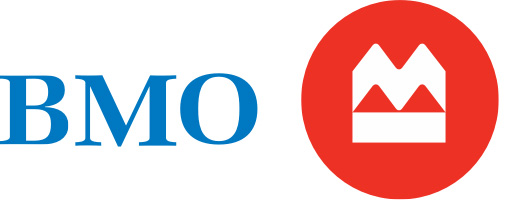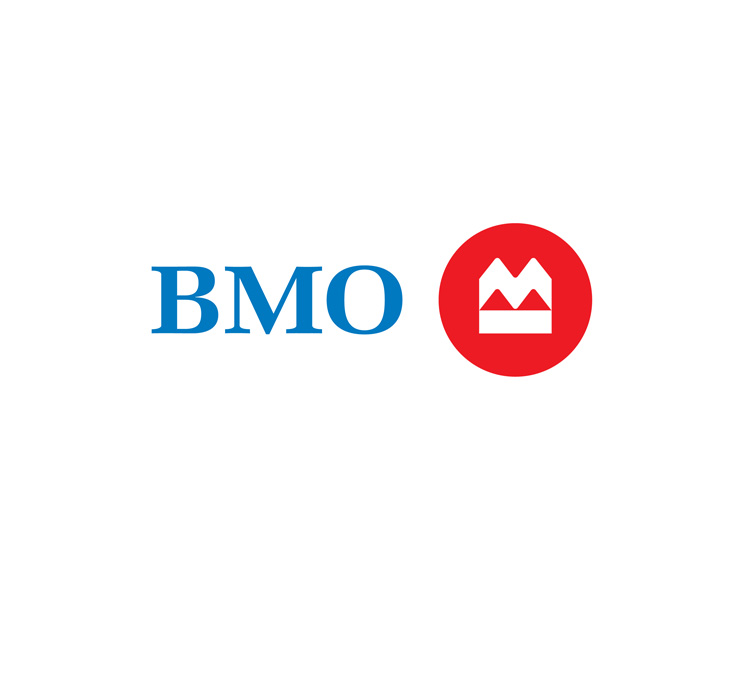
Commercial Real Estate Spring 2023 Market Update
-
bookmark
-
print



As Canada emerges from the pandemic, some unfamiliar forces are at work in the Commercial Real Estate sector. In our Spring 2023 Update we take a look at three megatrends impacting Canada’s CRE market.
Inflation: Wrench in the gears
With the pandemic inferno feeling largely under control in Canada, the focus has now shifted from dousing the flames to repairing the damage. The initial economic mayhem of the pandemic saw Canadian governments hose down the economy with low interest rates and hundreds of billions in stimulus programs. As interest rates dove and stimulus payments flowed, rational economic Canadians did what rational economic people do—they spent. But the inevitable economic consequence of all that liquidity, exacerbated by unforeseen geopolitical tensions and supply chain disruptions, has come home to roost in the form of rapid inflation.
For commercial real estate investors, inflation lobs a wrench into the gears of CRE’s income-generating machinery in the form of higher interest rates. Income properties are often viewed as a hedge against inflation due to their ability to increase rental rates during times of inflation. However, as we are seeing in today’s market, interest rates can rise faster than leases allow for rental rate adjustments, eroding income properties’ near-term ability to service debt.
Compounding the issue, CRE investors are accustomed to borrowing most of the money they need to buy investment properties to “lever up” their returns with debt costing less than the property’s yield for positive leverage. That formula has worked for, well, pretty much living memory. Buy a property yielding a return of, say, 7% (a “7 cap”), borrow 75% of the purchase price at 4%, enjoy a levered cash-on-cash return of about 9%—plus potential “upside” through rental rate increases, operating cost efficiencies and appreciation in the value of the property. As the property increases in value over time, refinance with a bigger mortgage and redeploy the “equity strip” into another CRE investment. Rinse, repeat, build wealth.
With borrowing costs recently increasing to levels not seen in over 10 years, that tried-and-true formula for CRE investment is under pressure. Interest rates are now approaching—in some cases surpassing—cap rates, reducing or eliminating the positive leverage on acquisitions. Some mortgages placed four or five years ago are struggling to renew in today’s higher rate environment. Some construction projects for income properties nearing completion can no longer “term out” their construction debt. All of this is placing downward pressure on commercial property values, with cap rates increasing 49 basis points through 2022, according to CBRE’s latest Canadian Cap Rates & Investment Insights report.
CRE investors are perennially optimistic, and few are hitting the panic button yet. Most view current elevated interest rate levels as a short-term measure to tame inflation and poised to reverse course, with CBRE predicting that investment volumes could reach an all-time high in 2023. For now, a wait-and-see attitude permeates much of the industry. Investors remain optimistic but have largely moved to the sidelines waiting for the dust to settle, with Cushman & Wakefield reporting CRE investment volume in Canada declined 19% year-over-year in 2022.
Lenders are likewise cautiously optimistic, with relationship lenders like BMO working together with their customers to help them through this volatile time. But with so many economic and geopolitical forces at work, it’s impossible to predict with confidence when or indeed if interest rates will decline, and market sentiment changes almost daily as economic data is released.
BMO Economics expects the Bank of Canada to begin reducing rates early next year. A generational buying opportunity? Maybe. Time to hoard cash? Some think so. In times of such uncertainty, the old adage resonates strongly: hope for the best but prepare for the worst. Those who have seen similar cycles in the past know that in times like this, a positive relationship with their lender is also helpful.
ESG: All aboard!
Environmental, social and governance factors have long been discussed across Canada’s CRE sector, but ESG has rapidly evolved from being a nice-to-have to an absolute imperative. The growing frequency of climate change-related weather events, increased social consciousness and a desire by Canadians to leave the planet better than they found it has catapulted ESG to the forefront of business priorities.
No longer the realm of “tree huggers,” ESG is now significant to critical in almost every aspect of the CRE industry:
-
Tenants are demanding landlords reduce the carbon footprint of their buildings and are willing to pay for it through higher rental rates for green buildings over brown building alternatives.
-
New construction technologies are seeing increased use of timber over the less green alternatives of concrete and steel.
-
Builders are being encouraged to reduce construction waste through programs such as BMO’s partnership with Habitat for Humanity, which helps socially conscious builders divert excess construction materials from landfills to construction of community housing.
-
Investors are incorporating ESG into investment decisions, such as Healthcare of Ontario Pension Plan (HOOPP), which at a recent CRE industry event showcased its separate Risk and ESG underwriting workstreams in evaluating potential CRE investments.
-
Shareholders are flexing their muscles, demanding corporate action on tough ESG issues like affordable housing.
-
Governments are listening, and in partnership with CMHC lenders are encouraging construction of affordable rental housing through attractive pricing and extended amortization on financing for apartment buildings with affordable rental components.
-
Lenders are acting, such as BMO’s recent acquisition of Alberta-based carbon credits developer Radicle to help clients reduce carbon emissions and transition to a net-zero world.
-
Educators are joining the fray, with easily accessible ESG education through programs like the CFA Institute’s Certificate in ESG Investing, equipping the next generation of business leaders with tools for greater sustainability in finance.
-
Investors are enhancing the value of their CRE assets through energy-efficient retrofits, which are improvements to various energy-consuming building systems and fixtures. Along with how retrofits can improve emissions, investors are exploring how they can help minimize tax exposure, increase compliance regulation and enhance quality of life.
It’s been a long time coming, but the ESG rubber has fully hit the road in the CRE sector. CRE participants should fully embrace this megatrend and get on board or risk being left behind—and the scorn of their children!
Capital: R, W… Wha?
In 1974 the Herstatt Bank in Germany collapsed. The collapse of this relatively small bank sparked a deep crisis in foreign exchange markets, the near collapse of a number of other financial institutions and brought to light systemic risks around the increasing globalization of banks. In response, the governors of the world’s largest central banks formed the Basel Committee on Banking Supervision at the Bank for International Settlements in Basel, Switzerland, with the goal of enhancing financial stability through strengthened regulation and supervision of banks worldwide.
Following the Lehman Brothers collapse in 2008 and the ensuing global financial crisis, the Basel Committee issued a number of measures to further strengthen banks and banking systems. Among the reforms was a requirement for banks to increase their capital ratios, effectively requiring banks to store more capital during good times to help cushion the blow in the case of an economic downturn.
The limited contagion from the recent challenges at Silicon Valley Bank, Signature Bank, First Republic Bank and Credit Suisse demonstrates how effective the Basel Committee’s measures have been to strengthen the global banking system. But they also show that there is always room for further improvement, and that the Committee’s work is not yet finished.
The latest round of Basel capital regulations, dubbed Basel III reforms (B3R), took effect for Canadian banks on Jan. 1, 2023. Most banks are still implementing the changes and the impact has yet to be broadly felt. Canada’s banks already have some of the strongest capital foundations of any banks in the world, so the effects are not expected to be significant for the average Canadian bank customer. However, one of the goals of B3R is for banks to hold proportionately more capital against higher risk loans, increasing banks’ risk-weighted assets, or RWA.
As a capital-intensive asset class, CRE borrowers generally seek the maximum leverage their properties can support such that commercial mortgages often gravitate toward the higher end of lenders’ risk matrices, which in turn attracts more RWA. The potential requirement for banks to hold more capital against these higher leverage loans could lead banks to increase credit spreads on these higher RWA loans in order to meet their target returns on capital, with pricing for commercial mortgages trending higher as these new regulations unfold. While we have not yet seen these new capital regulations increase commercial mortgage market pricing, the potential is there, making this a trend to watch.
Jim Eplett
Head of Real Estate Private Credit, BMO Global Asset Management
View Full Profile
As Canada emerges from the pandemic, some unfamiliar forces are at work in the Commercial Real Estate sector. In our Spring 2023 Update we take a look at three megatrends impacting Canada’s CRE market.
Inflation: Wrench in the gears
With the pandemic inferno feeling largely under control in Canada, the focus has now shifted from dousing the flames to repairing the damage. The initial economic mayhem of the pandemic saw Canadian governments hose down the economy with low interest rates and hundreds of billions in stimulus programs. As interest rates dove and stimulus payments flowed, rational economic Canadians did what rational economic people do—they spent. But the inevitable economic consequence of all that liquidity, exacerbated by unforeseen geopolitical tensions and supply chain disruptions, has come home to roost in the form of rapid inflation.
For commercial real estate investors, inflation lobs a wrench into the gears of CRE’s income-generating machinery in the form of higher interest rates. Income properties are often viewed as a hedge against inflation due to their ability to increase rental rates during times of inflation. However, as we are seeing in today’s market, interest rates can rise faster than leases allow for rental rate adjustments, eroding income properties’ near-term ability to service debt.
Compounding the issue, CRE investors are accustomed to borrowing most of the money they need to buy investment properties to “lever up” their returns with debt costing less than the property’s yield for positive leverage. That formula has worked for, well, pretty much living memory. Buy a property yielding a return of, say, 7% (a “7 cap”), borrow 75% of the purchase price at 4%, enjoy a levered cash-on-cash return of about 9%—plus potential “upside” through rental rate increases, operating cost efficiencies and appreciation in the value of the property. As the property increases in value over time, refinance with a bigger mortgage and redeploy the “equity strip” into another CRE investment. Rinse, repeat, build wealth.
With borrowing costs recently increasing to levels not seen in over 10 years, that tried-and-true formula for CRE investment is under pressure. Interest rates are now approaching—in some cases surpassing—cap rates, reducing or eliminating the positive leverage on acquisitions. Some mortgages placed four or five years ago are struggling to renew in today’s higher rate environment. Some construction projects for income properties nearing completion can no longer “term out” their construction debt. All of this is placing downward pressure on commercial property values, with cap rates increasing 49 basis points through 2022, according to CBRE’s latest Canadian Cap Rates & Investment Insights report.
CRE investors are perennially optimistic, and few are hitting the panic button yet. Most view current elevated interest rate levels as a short-term measure to tame inflation and poised to reverse course, with CBRE predicting that investment volumes could reach an all-time high in 2023. For now, a wait-and-see attitude permeates much of the industry. Investors remain optimistic but have largely moved to the sidelines waiting for the dust to settle, with Cushman & Wakefield reporting CRE investment volume in Canada declined 19% year-over-year in 2022.
Lenders are likewise cautiously optimistic, with relationship lenders like BMO working together with their customers to help them through this volatile time. But with so many economic and geopolitical forces at work, it’s impossible to predict with confidence when or indeed if interest rates will decline, and market sentiment changes almost daily as economic data is released.
BMO Economics expects the Bank of Canada to begin reducing rates early next year. A generational buying opportunity? Maybe. Time to hoard cash? Some think so. In times of such uncertainty, the old adage resonates strongly: hope for the best but prepare for the worst. Those who have seen similar cycles in the past know that in times like this, a positive relationship with their lender is also helpful.
ESG: All aboard!
Environmental, social and governance factors have long been discussed across Canada’s CRE sector, but ESG has rapidly evolved from being a nice-to-have to an absolute imperative. The growing frequency of climate change-related weather events, increased social consciousness and a desire by Canadians to leave the planet better than they found it has catapulted ESG to the forefront of business priorities.
No longer the realm of “tree huggers,” ESG is now significant to critical in almost every aspect of the CRE industry:
-
Tenants are demanding landlords reduce the carbon footprint of their buildings and are willing to pay for it through higher rental rates for green buildings over brown building alternatives.
-
New construction technologies are seeing increased use of timber over the less green alternatives of concrete and steel.
-
Builders are being encouraged to reduce construction waste through programs such as BMO’s partnership with Habitat for Humanity, which helps socially conscious builders divert excess construction materials from landfills to construction of community housing.
-
Investors are incorporating ESG into investment decisions, such as Healthcare of Ontario Pension Plan (HOOPP), which at a recent CRE industry event showcased its separate Risk and ESG underwriting workstreams in evaluating potential CRE investments.
-
Shareholders are flexing their muscles, demanding corporate action on tough ESG issues like affordable housing.
-
Governments are listening, and in partnership with CMHC lenders are encouraging construction of affordable rental housing through attractive pricing and extended amortization on financing for apartment buildings with affordable rental components.
-
Lenders are acting, such as BMO’s recent acquisition of Alberta-based carbon credits developer Radicle to help clients reduce carbon emissions and transition to a net-zero world.
-
Educators are joining the fray, with easily accessible ESG education through programs like the CFA Institute’s Certificate in ESG Investing, equipping the next generation of business leaders with tools for greater sustainability in finance.
-
Investors are enhancing the value of their CRE assets through energy-efficient retrofits, which are improvements to various energy-consuming building systems and fixtures. Along with how retrofits can improve emissions, investors are exploring how they can help minimize tax exposure, increase compliance regulation and enhance quality of life.
It’s been a long time coming, but the ESG rubber has fully hit the road in the CRE sector. CRE participants should fully embrace this megatrend and get on board or risk being left behind—and the scorn of their children!
Capital: R, W… Wha?
In 1974 the Herstatt Bank in Germany collapsed. The collapse of this relatively small bank sparked a deep crisis in foreign exchange markets, the near collapse of a number of other financial institutions and brought to light systemic risks around the increasing globalization of banks. In response, the governors of the world’s largest central banks formed the Basel Committee on Banking Supervision at the Bank for International Settlements in Basel, Switzerland, with the goal of enhancing financial stability through strengthened regulation and supervision of banks worldwide.
Following the Lehman Brothers collapse in 2008 and the ensuing global financial crisis, the Basel Committee issued a number of measures to further strengthen banks and banking systems. Among the reforms was a requirement for banks to increase their capital ratios, effectively requiring banks to store more capital during good times to help cushion the blow in the case of an economic downturn.
The limited contagion from the recent challenges at Silicon Valley Bank, Signature Bank, First Republic Bank and Credit Suisse demonstrates how effective the Basel Committee’s measures have been to strengthen the global banking system. But they also show that there is always room for further improvement, and that the Committee’s work is not yet finished.
The latest round of Basel capital regulations, dubbed Basel III reforms (B3R), took effect for Canadian banks on Jan. 1, 2023. Most banks are still implementing the changes and the impact has yet to be broadly felt. Canada’s banks already have some of the strongest capital foundations of any banks in the world, so the effects are not expected to be significant for the average Canadian bank customer. However, one of the goals of B3R is for banks to hold proportionately more capital against higher risk loans, increasing banks’ risk-weighted assets, or RWA.
As a capital-intensive asset class, CRE borrowers generally seek the maximum leverage their properties can support such that commercial mortgages often gravitate toward the higher end of lenders’ risk matrices, which in turn attracts more RWA. The potential requirement for banks to hold more capital against these higher leverage loans could lead banks to increase credit spreads on these higher RWA loans in order to meet their target returns on capital, with pricing for commercial mortgages trending higher as these new regulations unfold. While we have not yet seen these new capital regulations increase commercial mortgage market pricing, the potential is there, making this a trend to watch.
What to Read Next.
Household Debt Stays in the Spotlight
Shelly Kaushik, Economist | March 13, 2023 | Economic Insights, Commercial Real Estate
Canada’s household debt-to-income ratio fell 3.8 ppts to 180.5% in Q4 (seasonally adjusted), from an upwardly revised 184.3% in the p…
Continue Reading>Related Insights
Tell us three simple things to
customize your experience






Commercial
Commercial
-
Who We Are
-
Industry Expertise
- Engineering & Construction
- Engineering & Construction
- Agriculture
- Agriculture
- Trucking
- Trucking
- Public Sector
- Public Sector
- Commercial Real Estate
- Commercial Real Estate
- Dealer Finance
- Dealer Finance
- Professional Services
- Professional Services
- Media
- Oil & Gas Services
- Retail & Wholesale Distribution
- Technology Banking
- Manufacturing
- Manufacturing
- Media
- Oil & Gas Services
- Retail & Wholesale Distribution
- Technology Banking
- Private Equity Sponsors
- Private Equity Sponsors
- Healthcare
- Healthcare
- Franchise Finance
- Franchise Finance
- Business Properties
- Business Properties
- Cannabis & Emerging Industries
- Cannabis & Emerging Industries
-
We Can Help
- Business Strategy
- Business Strategy
- Equipment Financing & Leasing
- Equipment Financing & Leasing
- Manage Cash Flow
- Manage Cash Flow
- Economic Insights
- Economic Insights
- Doing Business in the U.S.
- Doing Business in the U.S.
- Doing Business Internationally
- Doing Business Internationally
- Asset Based Lending
- Asset Based Lending
- Loan Syndication & Agency Services
- Loan Syndication & Agency Services
- Finance Growth
- Finance Growth
- Manage Risk
- Manage Risk
- Mergers & Acquisitions
- Mergers & Acquisitions
- Subordinated Debt-Equity
- Subordinated Debt-Equity
- Wealth Management
- Wealth Management
- Climate Smart
- Climate Smart
-
Our Bankers



Banking products are subject to approval and are provided in Canada by Bank of Montreal, a CDIC Member.
BMO Commercial Bank is a trade name used in Canada by Bank of Montreal, a CDIC member.
Please note important disclosures for content produced by BMO Capital Markets. BMO Capital Markets Regulatory | BMOCMC Fixed Income Commentary Disclosure | BMOCMC FICC Macro Strategy Commentary Disclosure | Research Disclosure Statements
BMO Capital Markets is a trade name used by BMO Financial Group for the wholesale banking businesses of Bank of Montreal, BMO Bank N.A. (member FDIC), Bank of Montreal Europe p.l.c., and Bank of Montreal (China) Co. Ltd, the institutional broker dealer business of BMO Capital Markets Corp. (Member FINRA and SIPC) and the agency broker dealer business of Clearpool Execution Services, LLC (Member FINRA and SIPC) in the U.S. , and the institutional broker dealer businesses of BMO Nesbitt Burns Inc. (Member Canadian Investment Regulatory Organization and Member Canadian Investor Protection Fund) in Canada and Asia, Bank of Montreal Europe p.l.c. (authorised and regulated by the Central Bank of Ireland) in Europe and BMO Capital Markets Limited (authorised and regulated by the Financial Conduct Authority) in the UK and Australia and carbon credit origination, sustainability advisory services and environmental solutions provided by Bank of Montreal, BMO Radicle Inc., and Carbon Farmers Australia Pty Ltd. (ACN 136 799 221 AFSL 430135) in Australia.
The material contained in articles posted on this website is intended as a general market commentary. The opinions, estimates and projections, if any, contained in these articles are those of the authors and may differ from those of other BMO Commercial Bank employees and affiliates. BMO Commercial Bank endeavors to ensure that the contents have been compiled or derived from sources that it believes to be reliable and which it believes contain information and opinions which are accurate and complete. However, the authors and BMO Commercial Bank take no responsibility for any errors or omissions and do not guarantee their accuracy or completeness. These articles are for informational purposes only.
Bank of Montreal and its affiliates do not provide tax, legal or accounting advice. This material has been prepared for informational purposes only, and is not intended to provide, and should not be relied on for, tax, legal or accounting advice. You should consult your own tax, legal and accounting advisors before engaging in any transaction.
Third party web sites may have privacy and security policies different from BMO. Links to other web sites do not imply the endorsement or approval of such web sites. Please review the privacy and security policies of web sites reached through links from BMO web sites.
Please note important disclosures for content produced by BMO Capital Markets. BMO Capital Markets Regulatory | BMOCMC Fixed Income Commentary Disclosure | BMOCMC FICC Macro Strategy Commentary Disclosure | Research Disclosure Statements





